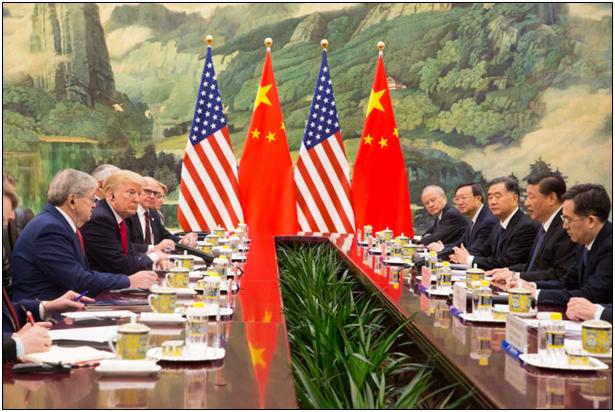To hear the financial media tell the story, one of the only factors to consider in the stock market’s recent turbulence is President Donald Trump and his trade agenda.
“Dow plunges 799 points on trade, slowdown fears,” CNN Business reported last week.
“Trump’s Tariff Tweets Help Create Turmoil In The Markets,” declared Forbes.com.
“’Tariff Man’ Trump’s China Tweets, Recession Fears, Push Dow Down 800 Points,” Yahoo! Finance suggested.
As if the U.S. has never had a stock market correction before where trade wasn’t necessarily a factor.
In the meantime, U.S. stock indices might have been long overdue for a correction anyway. For example, when the S&P 500 closed on Sept. 17 at 2,929.67, it was about 328 percent off its March 2009 low of 683.38.
There were a few other corrections along the way. The September high was also about 152 percent off a Nov. 2011 correction, and 57 percent above another correction in Feb. 2016 at 1864.78.
When should we start counting?
And were those corrections all caused by trade woes, too?
You see, when financial news doesn’t have trade conflicts to wail about it just gloms onto whatever else the news is to “explain” why stocks go up or down. In March 2009, it was China’s failure to produce a stimulus. In Nov. 2011, it was Eurozone fears. In Feb. 2016, it was lower oil prices and fears the global economy was slowing down.
So, looking back, China is arguably in worse shape right now than in 2009 with its own slowdown to contend with. The Eurozone remains a big ol’ mess. And oil prices are one again are getting pummeled — to the benefit of consumers but leaving that aside. None of that matters now, or it matters less in comparison to Trump, we’re led to believe.
Also missing is the traditional interest rate analysis. After years of near-zero percent interest rates — where mortgage, corporate and government paper continued trending downward — the Federal Reserve has once again started hiking the federal funds rate, which was effectively up to 2.2 percent in November according to the St. Louis Fed.
Some analysts suggest the Fed’s rate hikes are the cause of other short rates rising, for example, the 2-year treasury, which is now almost as high as the 10-year treasury — the spread between the two was only 0.13 percent. When that number inverts, it’s often a recession indicator.
So, even if Hillary Clinton had won the election and the U.S. had continued capitulating on trade to China and let’s say there were no new tariffs that the Trump administration has put into place, it’s quite likely the Fed would be hiking rates anyway.
And then, perhaps, stocks would have found a high and began correcting, too. And then the analysis might be slow growth in the U.S., or rising rates, as pushing stocks lower. Or slack demand for oil as China slowed down. Or who knows?
It’s just whatever is happening at the time that is said to fuel investor sentiment, even though what we’re really talking about are the individual motivations of trillions of transactions, some of which are institutional investors utilizing algorithms. Do machine-learning trading computers feel “trade fears” or do they just trade what the chart tells them to based on a host of factors?
The lesson might be that everyone wants credit when the economy is doing great, but to understand these corrections you have to consider the boom-to-bust cycles that markets tend to operate in. What goes up must eventually come down.
Sometimes, you can have the right policy mix and still get whacked. For example in 1981, Ronald Reagan and Congress gave America the largest tax cut in modern in history. In 1982, the U.S. was rewarded with a recession. It was not until 1983 and 1984 that you saw a real boom ensue, which historically is credited with the tax cuts and also inflation and interest rates coming down. But you wouldn’t have known it in 1982 when unemployment was rising.
There’s always more going on than what the headlines of financial media can tell you, and even wider analyses will fail to fully capture the totality of what truly makes markets move. For example, in the first many months of 2018, Trump was pursuing the same exact trade posture with China and other nations, and stocks kept rallying. At what point did “trade fears” cause a stock market correction?
They didn’t. It’s just myopic hand wavery masquerading as analysis, politicizing a correction that almost certainly would have happened anyway. When it bottoms out eventually and starts the virtuous cycle again, will the media then credit the President’s economic policies? We still have to consider the big picture, and accept that not everything is completely knowable. Markets are bigger than just tariffs.
Robert Romano is the Vice President of Public Policy at Americans for Limited Government.







